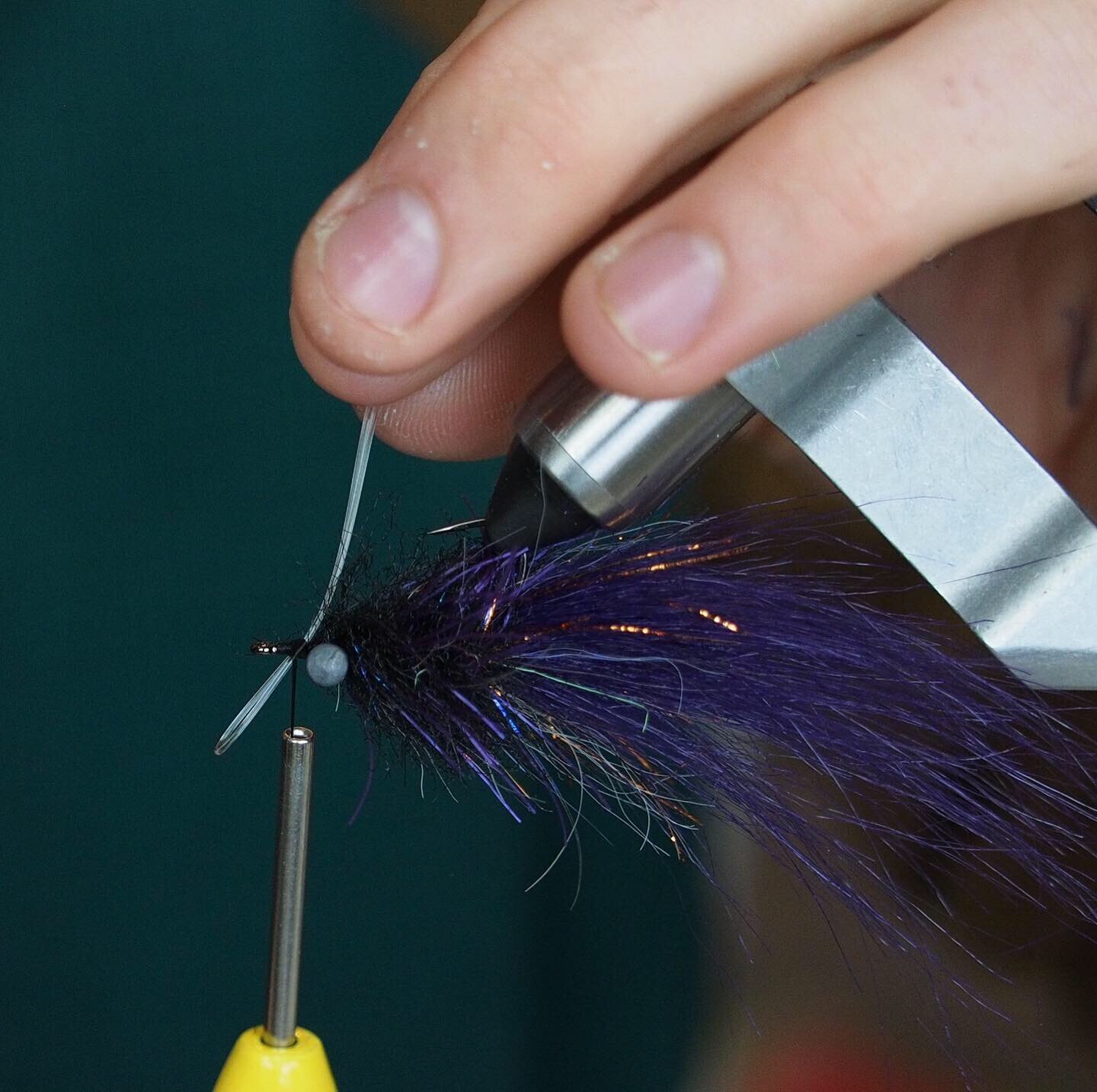My (Current) Favorite Red Fish Fly
One of my favorite flies for our Low Country red fish has been this basic fly. By changing the size and colors of your hooks, weights, and materials you can tie this fly for a variety of fishing scenarios. If you want you can even add eyes, crazy legs, and other bling but if you’re choosing between adding bling and practicing casting and fly presentation, I’d recommend the latter. For the fly pictured I used the following:
Hook – Umpqua XS 410 NI5X Sz 1 (I now like these better than the hooks pictured)
Thread – Danville 210 Denier Flat Waxed Nylon
Weight (Eyes) – Wapsi Dumbbell Eyes Plain X-SM (Bead chain is also great if you don’t need as much weight)
Tail – Hairline Dubbin Extra Select Craft Fur Purple
Flash – Hairline Dubbin UV Polar Chenille UV Copper PC
Body – EP Taranula Hairy Legs Brush 1 Inch Black and Purple
Weed Guard – 20lb Hard Mono
If your local the materials for these items can be found at Bay Street Outfitters or Southern Drawl Outfitters.
Now that you have your materials here’s how it’s done.
First, secure your thread to the hook then wrap on your lead (or bead chain) eyes. Some people use glue to help keep the eyes form moving but if wrapped well enough they will be secure. Be sure to leave space in front of the lead eyes for your weed guard and whip finish.
Once the eyes are in place wrap your thread down the hooks shank to right at or just past the tip of the hook. Prepare your craft fur by cutting off a clump then, while holding the two inchish tail section, pull or comb out the excess short hairs. You don’t want to tie on any craft fur that isn’t contributing to the actual tail of the fly. Now you’re ready to secure the craft fur to the top of the hook as pictured. Once secured, cut off the excess craft fur right behind the lead eyes.
Next, secure one end of your chenille to where your thread transitions to your craft fur. wrap your thread back towards the lead eyes to get it out of the way. Once the thread is out of the way wrap the chenille on. Be sure to keep the loose stands of chenille to the rear as you add more wraps. It’s up to you how much flash you want to add but you don’t need much. Once you have what you need unwrap the thread back to the chenille and secure it in place while pulling all the stands to the rear.
Similar to how you added the chenille start by securing the EP Brush right where your thread transitions to chenille. Once the EP brush is secure wrap your thread all the way to the eye of the hook to get it out of the way.
Begin wrapping the EP Brush forward. While you’re wrapping, brush or comb already secured brush fibers out of way of new wraps. Once you make it to the lead eyes secure the brush in place and cut off the excess. When primarily imitating crabs I usually use just shy of half a brush per fly to create a dense full body. You could make the body less dense to encourage more body fiber movement when imitating a minnow.
Now you are ready to add your weed guard. This is especially essential if your fishing for flood tide red fish in the grass. Sometimes I do not add weed guards to my flies meant for winter mud flats. There are a dozen great ways to add a weed guard but given that I’m going to drag this fly through some thick grass I like the double guards sticking up and I like using heavier fluorocarbon. First, make a U out of your line then squeeze the bend into a V. Next place the guard on each side of the hook shank with the V pointed down. Add wraps around the sides then pull the guard up so that the V comes tight to the shank of the hook. Next, place your finger directly behind the guard and use it as a guide to wrap thread directly behind the weed guard further securing it and causing it to stand up.
Again because of the dense grass, I like to trim my weed guards off so that the tips reach the barb of the hook. Red Fish are stout enough fish that I don’t feel the need to crimp the barb.
Add the whip finish to tie off your thread. I like doing four solid whip fishes and forgoing the use of glue. It may happen eventually but I haven’t had a fly come apart yet.
At this point trim any crazy fibers and stick it in your fly box.










